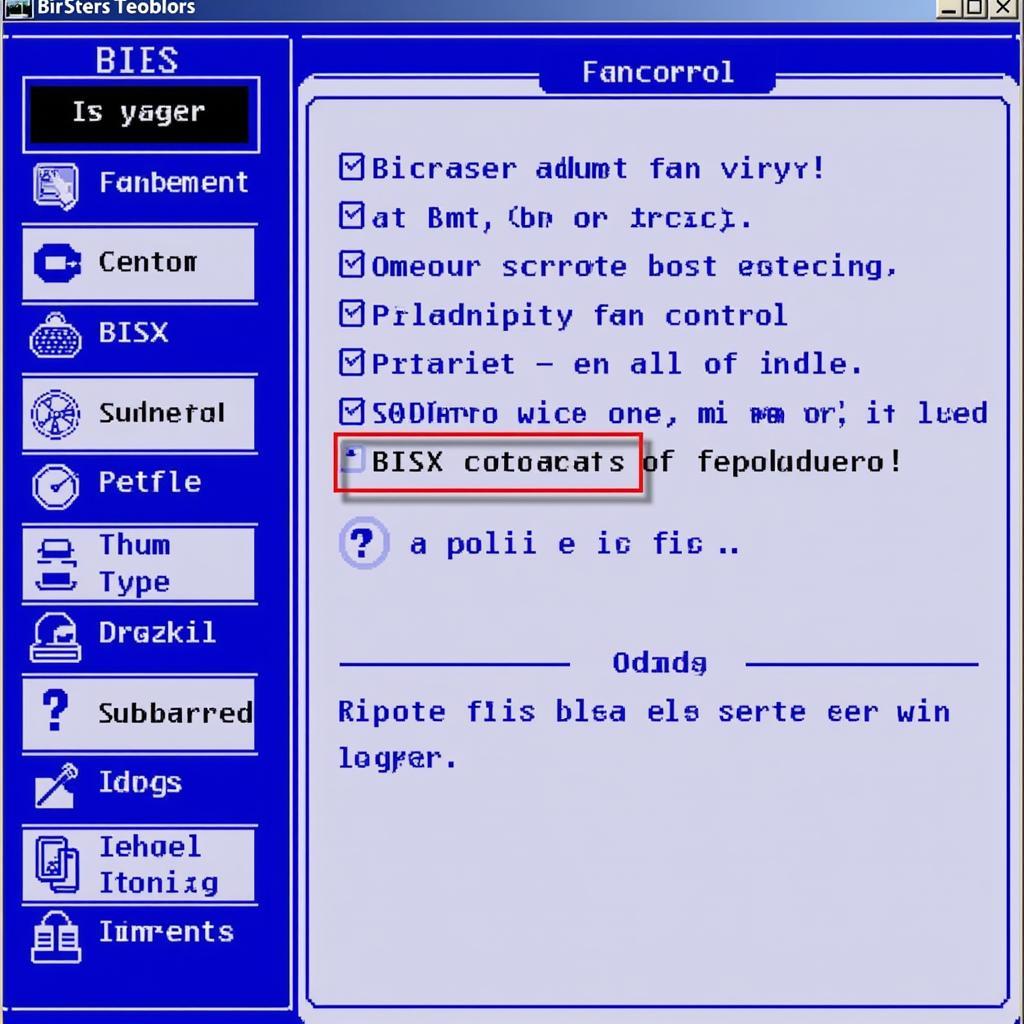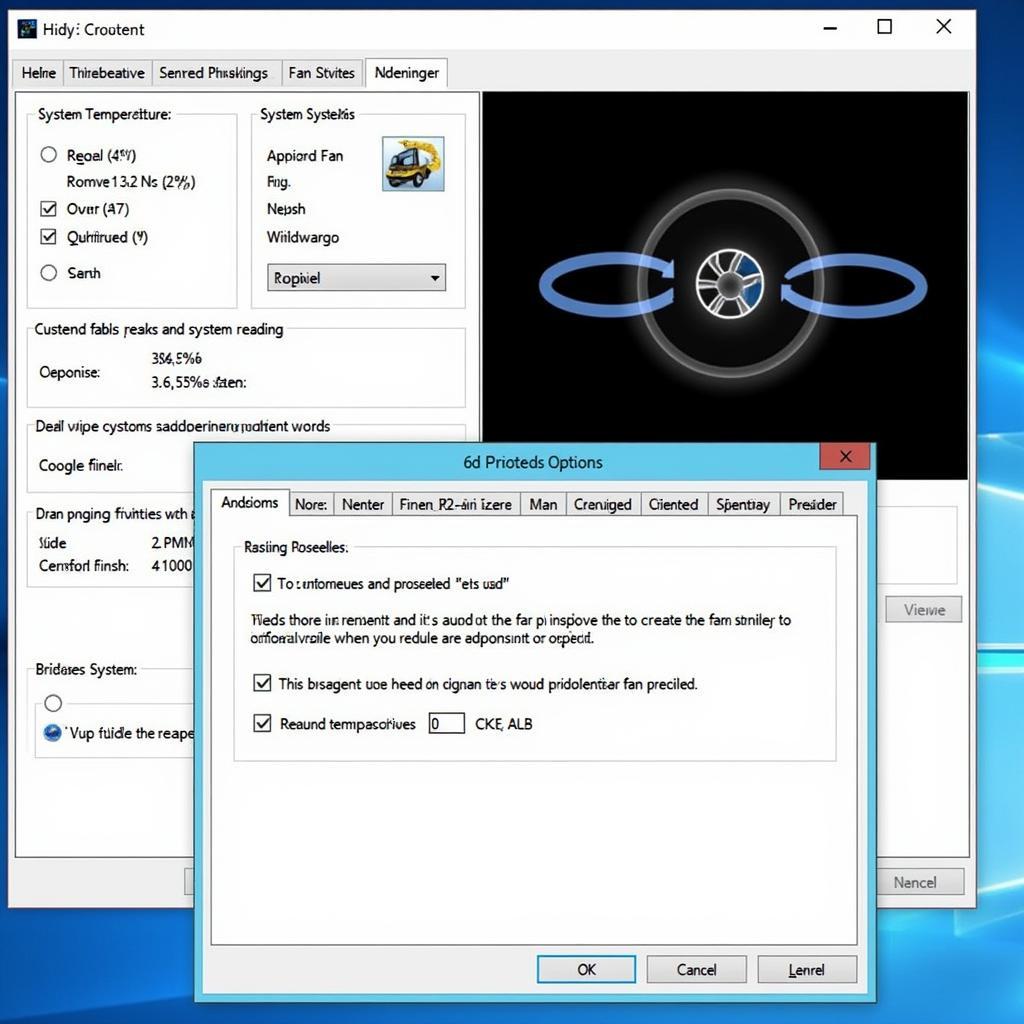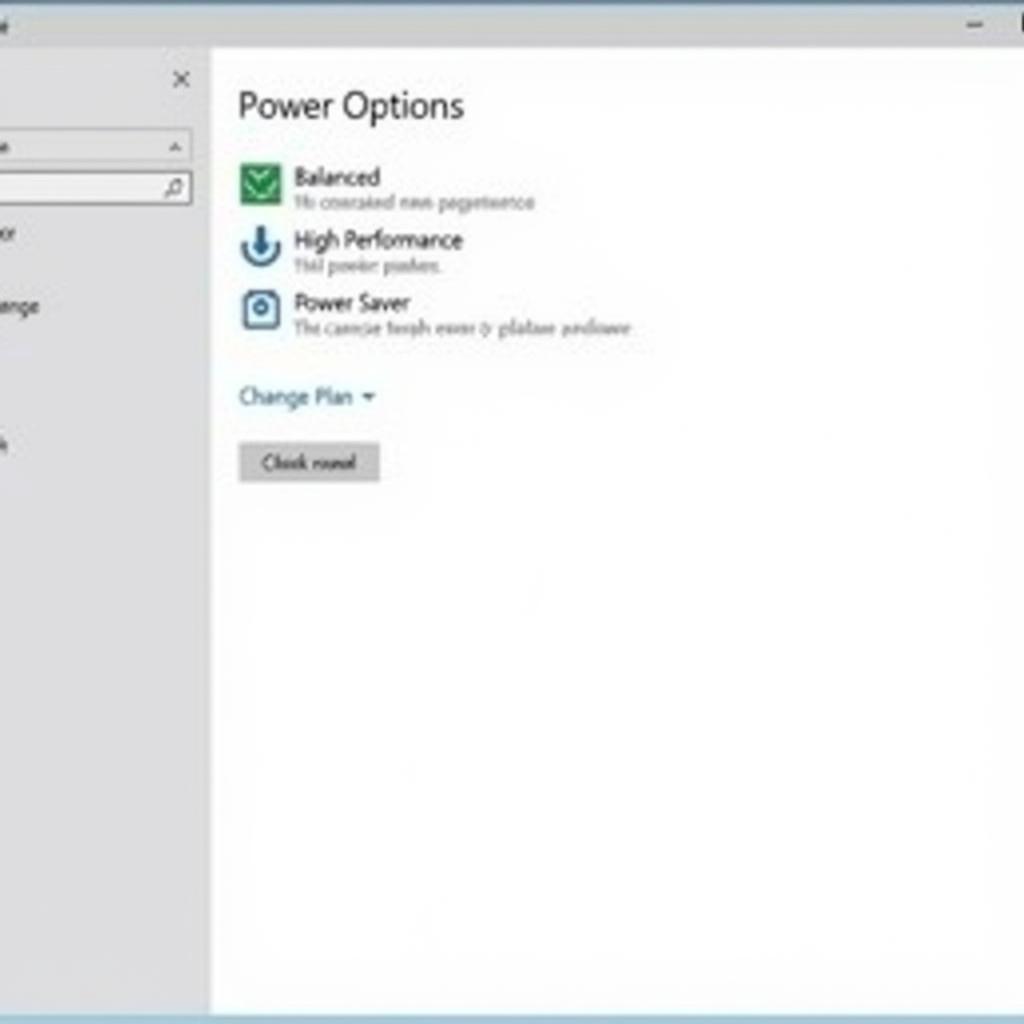Having trouble with your laptop fan constantly running or not spinning enough? Laptop fan control in Windows 10 is essential for maintaining optimal performance and preventing overheating. This comprehensive guide will walk you through various methods and tools to take control of your laptop fan speed.
Why is Laptop Fan Control Important?
Before we delve into the “how-to,” let’s understand why managing your laptop fan speed is crucial.
Your laptop’s fan is responsible for dissipating heat generated by the processor (CPU) and graphics card (GPU). When these components work hard, they get hot. If the heat isn’t properly managed, it can lead to performance throttling, system instability, and even permanent damage.
Effective laptop fan control allows you to:
- Prevent Overheating: Ensure your laptop operates within a safe temperature range.
- Reduce Fan Noise: Quiet down a noisy fan when your laptop is idle or under low load.
- Extend Hardware Lifespan: Prolonged exposure to high temperatures can shorten the life of your components.
Methods for Laptop Fan Control in Windows 10
Windows 10 doesn’t offer a built-in solution for directly adjusting fan speeds. However, there are several effective methods you can use:
1. BIOS/UEFI Settings
 Laptop BIOS settings
Laptop BIOS settings
Your laptop’s BIOS (Basic Input/Output System) or UEFI (Unified Extensible Firmware Interface) often provides basic fan control options.
- Accessing BIOS/UEFI: Restart your laptop and repeatedly press the designated key (usually F2, F10, Del, or Esc) during startup.
- Navigating the Menus: Look for sections related to “Hardware Monitoring,” “Fan Control,” or “Power Management.”
- Adjusting Settings: You might find options to enable or disable automatic fan control, set fan profiles (Quiet, Balanced, Performance), or even define custom fan curves.
Note: BIOS/UEFI settings vary significantly between laptop manufacturers and models. Refer to your laptop’s user manual for specific instructions.
2. Third-Party Fan Control Software
 Laptop fan control software interface
Laptop fan control software interface
Numerous third-party applications provide advanced fan control capabilities. These programs typically offer:
- Real-time Monitoring: Monitor CPU and GPU temperatures, fan speeds, and other system parameters.
- Custom Fan Curves: Create profiles that adjust fan speeds based on specific temperature thresholds.
- Multiple Fan Control: Manage the speeds of individual fans in laptops with multiple cooling fans.
Popular Fan Control Software:
- SpeedFan: A veteran tool known for its comprehensive features and support for various hardware.
- NoteBook FanControl: A user-friendly option that often comes pre-configured for many laptop models.
- Argus Monitor: A paid alternative with advanced monitoring and fan control features.
Caution: Exercise caution when using third-party software, as incorrect settings can potentially harm your laptop. Always research thoroughly and use reputable applications.
3. Power Management Plans
 Windows power plan settings
Windows power plan settings
Windows 10’s built-in power plans indirectly influence fan behavior by adjusting system performance.
- Adjusting Power Plans: Go to “Control Panel” > “Hardware and Sound” > “Power Options.”
- Selecting a Plan: Choose from “Balanced” (default), “Power Saver,” or “High Performance.”
- Modifying Settings: Click “Change plan settings” to further customize each plan, potentially affecting fan speed based on power usage.
Note: While power plans don’t offer direct fan control, they can provide a balance between performance and cooling.
4. Cleaning Your Laptop
Dust accumulation can obstruct airflow and force your laptop fan to work harder, leading to increased noise and potential overheating.
- Regular Cleaning: Shut down your laptop, unplug it, and use compressed air to blow out dust from vents and the fan itself.
- Professional Cleaning: Consider having your laptop professionally cleaned annually or more frequently if you use it in a dusty environment.
Troubleshooting Common Fan Issues
If you’re experiencing persistent fan problems, here are some potential solutions:
- How to Check if the Laptop Fan Works
- CPU Fan Control Windows 10
- Fn Fan Keys Don’t Work
- Fan Speed High When Log in Windows 10
- GPU Fan Always at 100
Conclusion
Effective laptop fan control in Windows 10 is essential for ensuring your device runs smoothly, quietly, and safely. By exploring the methods outlined in this guide—from BIOS settings and third-party software to simple cleaning practices—you can take charge of your laptop’s cooling system and optimize its performance for the long haul. Remember to proceed with caution, especially when adjusting settings within the BIOS or using third-party software.


